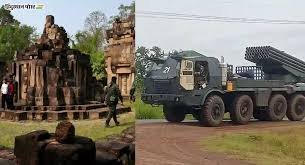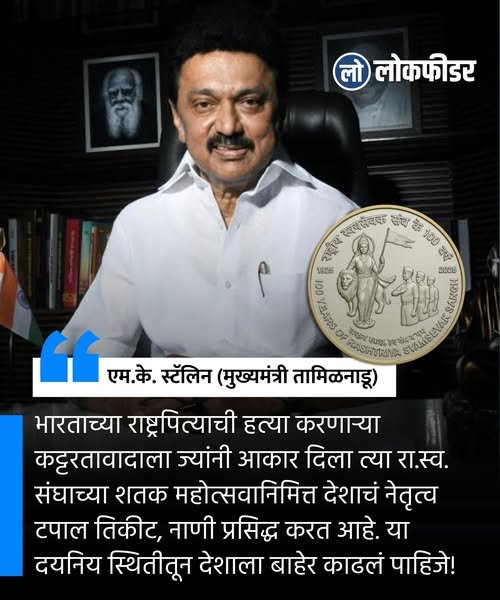
'It is too early to talk about ceasefire', troubles are not stopping in the Thailand-Cambodia war
The ongoing military conflict between Thailand and Cambodia in Southeast Asia is not stopping. There has been a long-standing dispute between the two countries over the ancient Hindu temples Preah Vihear and Ta Muen Thom located on the border, which has now turned violent. After firing and rocket attacks that began on Thursday morning, clashes continued on Friday as well, threatening regional peace.
Beginning of the war and current situation
The presence of a Cambodian drone on the Thai border on Thursday morning increased tensions. Thai soldiers spotted six armed Cambodian soldiers near the Ta Muen Thom temple in Surin province, after which firing started between the two sides. Cambodia attacked Thai military and civilian targets with BM-21 Grad rocket launchers, killing at least 14 people, including 13 civilians and a soldier. In response, Thailand carried out airstrikes on Cambodian military bases with its F-16 fighter jets, increasing tensions between the two countries.
Humanitarian crisis and displacement
The conflict has led to a major humanitarian crisis. According to Thailand's Home Ministry, more than 1,30,000 people from four border provinces have been relocated to 300 temporary shelters. About 4,000 people have also been displaced in Cambodia's Oddar Minchey province. Both countries have sealed their borders and severed diplomatic ties. Thailand has appealed to its citizens living in Cambodia to leave the country immediately.
International response and demand for ceasefire
At the request of Cambodian Prime Minister Hun Manet, the United Nations Security Council has called an emergency meeting on Friday at 12:30 pm (Indian time). The US, France, the European Union and China have appealed for an immediate end to the conflict. However, a spokesman for Thailand's Foreign Ministry said, "It is too early to talk about a ceasefire until Cambodia stops its aggression." Thailand's acting Prime Minister Phumtham Vechayachai has warned that the dispute "could escalate into war."
Historical background
The dispute between Thailand and Cambodia began with a map drawn by France in 1907, when Cambodia was a French colony. In 1962, the International Court of Justice declared Preah Vihear temple to be part of Cambodia, but the dispute over the surrounding areas continued. Tensions escalated after the temple was given UNESCO World Heritage Site status in 2008, resulting in several clashes between 2008-2011. In May 2025, the death of a Cambodian soldier reignited the tension.
Geopolitical implications
The conflict is not limited to just two countries. Cambodia is considered a close ally of China, while Thailand is inclined towards the US. Analysts believe that this dispute could take the form of a proxy war between China and the US. However, China has appealed to both countries for peace and has not openly supported any side. India has also advised its citizens to avoid traveling to seven sensitive provinces of Thailand.
What's happening next?
Analysts say that the possibility of a full-fledged war between the two countries is low, but the current leadership seems to lack enough will to reduce tensions. Political instability in Thailand and economic crisis in Cambodia are further complicating the situation. The role of ASEAN countries can be important in resolving this dispute, but no concrete progress has been made so far.
As this conflict continues, the eyes of the world are fixed on the region. Whether this dispute will be resolved through peaceful talks or will turn into a major regional crisis will be clear in the coming days.
The ongoing military conflict between Thailand and Cambodia in Southeast Asia is not stopping. There has been a long-standing dispute between the two countries over the ancient Hindu temples Preah Vihear and Ta Muen Thom located on the border, which has now turned violent. After firing and rocket attacks that began on Thursday morning, clashes continued on Friday as well, threatening regional peace.
Beginning of the war and current situation
The presence of a Cambodian drone on the Thai border on Thursday morning increased tensions. Thai soldiers spotted six armed Cambodian soldiers near the Ta Muen Thom temple in Surin province, after which firing started between the two sides. Cambodia attacked Thai military and civilian targets with BM-21 Grad rocket launchers, killing at least 14 people, including 13 civilians and a soldier. In response, Thailand carried out airstrikes on Cambodian military bases with its F-16 fighter jets, increasing tensions between the two countries.
Humanitarian crisis and displacement
The conflict has led to a major humanitarian crisis. According to Thailand's Home Ministry, more than 1,30,000 people from four border provinces have been relocated to 300 temporary shelters. About 4,000 people have also been displaced in Cambodia's Oddar Minchey province. Both countries have sealed their borders and severed diplomatic ties. Thailand has appealed to its citizens living in Cambodia to leave the country immediately.
International response and demand for ceasefire
At the request of Cambodian Prime Minister Hun Manet, the United Nations Security Council has called an emergency meeting on Friday at 12:30 pm (Indian time). The US, France, the European Union and China have appealed for an immediate end to the conflict. However, a spokesman for Thailand's Foreign Ministry said, "It is too early to talk about a ceasefire until Cambodia stops its aggression." Thailand's acting Prime Minister Phumtham Vechayachai has warned that the dispute "could escalate into war."
Historical background
The dispute between Thailand and Cambodia began with a map drawn by France in 1907, when Cambodia was a French colony. In 1962, the International Court of Justice declared Preah Vihear temple to be part of Cambodia, but the dispute over the surrounding areas continued. Tensions escalated after the temple was given UNESCO World Heritage Site status in 2008, resulting in several clashes between 2008-2011. In May 2025, the death of a Cambodian soldier reignited the tension.
Geopolitical implications
The conflict is not limited to just two countries. Cambodia is considered a close ally of China, while Thailand is inclined towards the US. Analysts believe that this dispute could take the form of a proxy war between China and the US. However, China has appealed to both countries for peace and has not openly supported any side. India has also advised its citizens to avoid traveling to seven sensitive provinces of Thailand.
What's happening next?
Analysts say that the possibility of a full-fledged war between the two countries is low, but the current leadership seems to lack enough will to reduce tensions. Political instability in Thailand and economic crisis in Cambodia are further complicating the situation. The role of ASEAN countries can be important in resolving this dispute, but no concrete progress has been made so far.
As this conflict continues, the eyes of the world are fixed on the region. Whether this dispute will be resolved through peaceful talks or will turn into a major regional crisis will be clear in the coming days.
Beginning of the war and current situation
The presence of a Cambodian drone on the Thai border on Thursday morning increased tensions. Thai soldiers spotted six armed Cambodian soldiers near the Ta Muen Thom temple in Surin province, after which firing started between the two sides. Cambodia attacked Thai military and civilian targets with BM-21 Grad rocket launchers, killing at least 14 people, including 13 civilians and a soldier. In response, Thailand carried out airstrikes on Cambodian military bases with its F-16 fighter jets, increasing tensions between the two countries.
Humanitarian crisis and displacement
The conflict has led to a major humanitarian crisis. According to Thailand's Home Ministry, more than 1,30,000 people from four border provinces have been relocated to 300 temporary shelters. About 4,000 people have also been displaced in Cambodia's Oddar Minchey province. Both countries have sealed their borders and severed diplomatic ties. Thailand has appealed to its citizens living in Cambodia to leave the country immediately.
International response and demand for ceasefire
At the request of Cambodian Prime Minister Hun Manet, the United Nations Security Council has called an emergency meeting on Friday at 12:30 pm (Indian time). The US, France, the European Union and China have appealed for an immediate end to the conflict. However, a spokesman for Thailand's Foreign Ministry said, "It is too early to talk about a ceasefire until Cambodia stops its aggression." Thailand's acting Prime Minister Phumtham Vechayachai has warned that the dispute "could escalate into war."
Historical background
The dispute between Thailand and Cambodia began with a map drawn by France in 1907, when Cambodia was a French colony. In 1962, the International Court of Justice declared Preah Vihear temple to be part of Cambodia, but the dispute over the surrounding areas continued. Tensions escalated after the temple was given UNESCO World Heritage Site status in 2008, resulting in several clashes between 2008-2011. In May 2025, the death of a Cambodian soldier reignited the tension.
Geopolitical implications
The conflict is not limited to just two countries. Cambodia is considered a close ally of China, while Thailand is inclined towards the US. Analysts believe that this dispute could take the form of a proxy war between China and the US. However, China has appealed to both countries for peace and has not openly supported any side. India has also advised its citizens to avoid traveling to seven sensitive provinces of Thailand.
What's happening next?
Analysts say that the possibility of a full-fledged war between the two countries is low, but the current leadership seems to lack enough will to reduce tensions. Political instability in Thailand and economic crisis in Cambodia are further complicating the situation. The role of ASEAN countries can be important in resolving this dispute, but no concrete progress has been made so far.
As this conflict continues, the eyes of the world are fixed on the region. Whether this dispute will be resolved through peaceful talks or will turn into a major regional crisis will be clear in the coming days.

.jpg)











.jpg)



.png)
